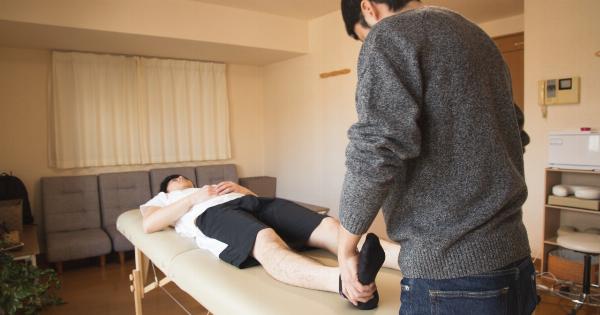Spinal Muscular Atrophy (SMA) is a genetic disorder that affects the muscles used for movement, causing them to waste away or become atrophied. It is a rare incurable disease that often leads to severe muscle weakness, paralysis, and even death.
SMA affects people of all ages, races, and genders, and it has been found to be the leading genetic cause of death in infants. There are different types of SMA, ranging from the most severe form, which affects infants, to the least severe form, which presents in adulthood. In this article, we take a closer look at the causes of SMA.
What is Spinal Muscular Atrophy?
Spinal Muscular Atrophy is a neuromuscular disorder that occurs due to the loss of specialized nerve cells, called motor neurons, in the spinal cord.
Motor neurons are responsible for relaying signals from the brain to the voluntary muscles of the body, such as those in the arms, legs, chest, and face. The loss of these motor neurons leads to a gradual and progressive loss of function in the muscle groups that they innervate.
As the disease progresses, patients experience muscle wasting, difficulty breathing and swallowing, and may require mechanical ventilation to aid in respiration.
Types of Spinal Muscular Atrophy
There are four main types of SMA, categorized by the age of onset and severity of symptoms:.
Type 1: Werdnig-Hoffmann disease (Infantile-Onset SMA)
This is the most severe form of SMA, and it affects infants from birth to six months. It is characterized by poor feeding, breathing difficulties, and progressive muscle weakness, leading to respiratory failure and death in most cases.
The prognosis for this type of SMA is poor, with only a few infants surviving past the age of 2 without extensive intervention.
Type 2: Dubowitz disease (Intermediate SMA)
This form of SMA typically occurs between 6 to 18 months when babies begin to sit independently but are unable to stand or walk.
Symptoms include muscle weakness, wasting, and respiratory and swallowing difficulties that lead to recurrent lung infections. The life expectancy for this type of SMA is variable, with some individuals living into adulthood with moderate support.
Type 3: Kugelberg-Welander disease (Juvenile SMA)
This form of SMA typically appears after 18 months, with the onset of symptoms progressing over several years. Symptoms include muscle weakness, atrophy, and difficulty walking and standing, making individuals reliant on mobility aides.
This type of SMA can go into remission during adolescence but can also lead to progressive weakness and significant disability.
Type 4: Adult-Onset SMA
This is the least common form of SMA, and it generally presents in the 30s or 40s. Symptoms are usually mild, and there is no significant decline in the lifespan or muscle function.
Adult-onset SMA may cause muscle weakness, and coordination problems, but many patients do not become significantly disabled.
The Genetics of Spinal Muscular Atrophy
SMA is caused by changes in a gene called the Survival Motor Neuron gene (SMN1), responsible for encoding a protein called the SMN protein.
The SMN protein is essential for motor neuron survival and function, and a deficiency in this protein leads to the degeneration of the motor neurons in the spinal cord. There is a second related gene, SMN2, which encodes for the SMN protein to a lesser extent than the SMN1 gene.
However, SMN2 can partially compensate for the loss of SMN1, so the number of copies of the SMN2 gene an individual possesses can influence their disease severity.
Genetic Inheritance of SMA
SMA is an autosomal recessive disorder, meaning that an individual must inherit two copies of an abnormal gene, one from each parent, to develop SMA.
Individuals who inherit one copy of the mutated gene, called carriers, usually do not display any symptoms of the disease themselves but may pass the gene on to their children. When two carriers have children, each child has a 25% chance of inheriting both abnormal genes and developing SMA, a 50% chance of inheriting only one mutated gene and becoming a carrier, and a 25% chance of inheriting both normal genes.
Diagnosing Spinal Muscular Atrophy
Diagnosis of SMA depends on a combination of a patient’s medical history and clinical examination, imaging studies such as an MRI scan and genetic testing.
Blood or saliva samples taken from the patient can be analyzed for mutations in the SMN1 gene, and the number of copies of the SMN2 gene can also be measured using a molecular technique called MLPA (Multiplex Ligation-dependent Probe Amplification).
Treatment for Spinal Muscular Atrophy
Currently, there is no cure for SMA, and treatment aims to improve symptoms and promote quality of life. Treatment is supportive and depends on the type and severity of SMA.
Nusinersen
A new treatment option, Nusinersen, has recently been approved for the treatment of SMA. It is a non-invasive spinal injection designed to increase the production of SMN2 protein, thus compensating for the loss of SMN1.
The treatment is not curative, but it can slow the progression of the disease and improve a person’s quality of life.
Physiotherapy and Occupational Therapy
Physiotherapy and occupational therapy are essential for individuals with SMA and aim to promote mobility and improve muscle function. Exercises and stretches can help to maintain joint mobility, prevent contractures, and strengthen weakened muscles.
Respiratory Support and Nutrition Management
Patients with SMA may require respiratory support, including mechanical ventilation, to assist with breathing and coughing.
Nutritional support, including the use of feeding tubes, might also be necessary to ensure adequate calorie intake to reduce the risk of malnutrition and support overall health.
Conclusion
Spinal Muscular Atrophy is a rare neuromuscular disorder caused by changes in the SMN1 gene, which leads to a deficiency of the SMN protein and ultimately, a loss of motor neurons in the spinal cord.
SMA is an autosomal recessive disorder, and genetic testing can help to diagnose the disease and inform genetic counseling. SMA is currently incurable, and treatment options aim to slow the disease progression and improve quality of life. Development of several new and promising treatments indicates that the future might hold better outcomes for individuals with SMA.





























